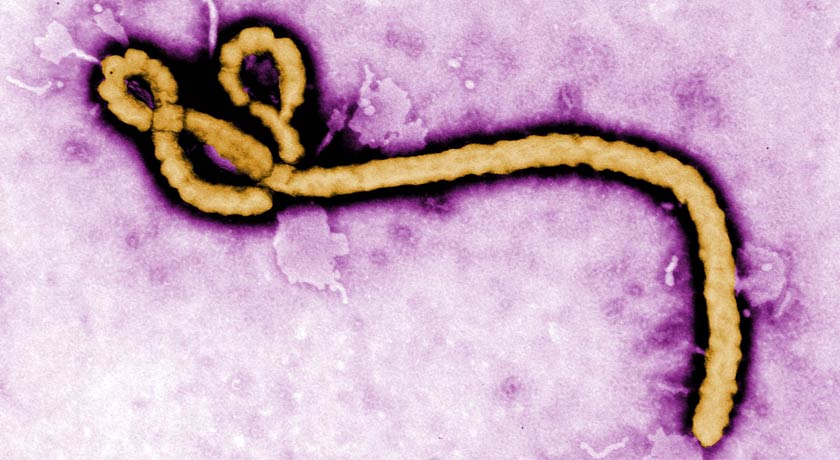Explainer: What is Ebola?
An unusual type of virus has periodically led to outbreaks of a devastating infection where people may bleed to death

The Ebola virus, seen here in a colorized transmission electron micrograph, has a distinct shape.
Frederick A. Murphy/CDC
By Janet Raloff
It’s got a long name: Ebola hemorrhagic fever. As infections go, this is a scary one. It kills anywhere from 25 to 88 percent of everyone it infects. And people who do come down with the disease suffer mightily. From 2 to 21 days after exposure, they can develop a fever, headaches, muscle pain, diarrhea, vomiting and loss of appetite. As the disease progresses, it can cause the body to start bleeding internally — and seemingly uncontrollably.
The good news: This disease is not easy to spread. For instance, people do not appear to become infected through the air, as occurs with influenza and many other germs. The virus lives in blood. And that’s the primary means by which people become infected — by getting tainted blood or other bodily fluids into a cut, an eye or the mouth.
The disease takes its name from the region where it was first identified: communities near the Ebola River in what was known as Zaire. (That country is now the Democratic Republic of Congo.) As of 2014, there appear to have been 21 major outbreaks of the disease, mostly in central or East Africa. The first was reported in 1976. At that time, 318 people in Zaire contracted the disease — and 280 died.
The germ responsible is called a filovirus. It’s a threadlike germ that causes only two known diseases: Ebola and a related infection known as Marburg. No one knows where the virus hides between outbreaks in humans. The suspicion is that bats, deerlike creatures, or some other wild animals carry the virus — perhaps without becoming ill themselves. Then, when people pick up an infected animal, or butcher it to eat it, they may encounter the virus.
Diseases that spill over from wild animals to people are known as zoonoses. Many of the most famous emerging diseases, including Nipah virus and influenza, seem to hide out in animals. Such animal hosts are known as reservoirs.
As of early 2014, there were no drugs to cure Ebola nor vaccines to prevent it. But many research centers have been working on such medicines for many years. Because the West African outbreak of 2014 was so severe, killing well over 1,000 people, public health officials authorized the use of one experimental drug. It was called Zmapp. Doctors administered it to six Ebola patients during the summer of 2014. Several of the treated patients recovered. It was not known, however, if the drug helped their survival or their body’s immune systems simply killed the germs.
There wasn’t enough Zmapp (which was only supposed to be tested in a few animals) to treat any more people right away. So health officials got together in August 2014 to review a range of possible candidate new drugs. Their goal was to fast-track the testing of these medicines.







